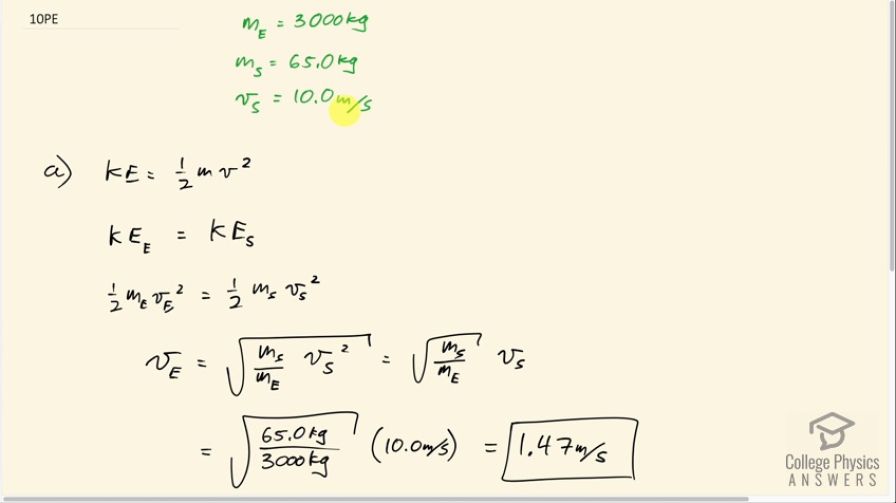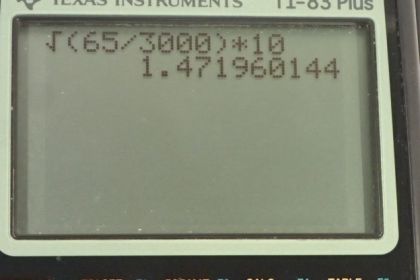Question
(a) How fast must a 3000-kg elephant move to have the same kinetic energy as a 65.0-kg sprinter running at 10.0 m/ s? (b) Discuss how the larger energies needed for the movement of larger animals would relate to metabolic rates.
Final Answer
- Animals get energy from food. Given the same speed, a larger animal will have more kinetic energy, and thus needs a larger metabolic rate to more quickly convert food energy into kinetic energy.
Solution video
OpenStax College Physics for AP® Courses, Chapter 7, Problem 10 (Problems & Exercises)

vote with a rating of
votes with an average rating of
.
Calculator Screenshots
Video Transcript
This is College Physics Answers with Shaun Dychko. An elephant has a mass of 3000.0 kilograms and a sprinter has a mass of 65.0 and the sprinter's traveling 10 meters per second and we are told that given that they have the same kinetic energies, what speed must the elephant be moving? So kinetic energy is one-half times mass times speed squared and we have the kinetic energy of the elephant equals the kinetic energy of the sprinter. So that's to say one-half mass elephant times speed of the elephant squared equals one-half mass of the sprinter times speed of the sprinter squared. Now the one-halves cancel on both sides when you multiply both sides by 2 and then we'll divide both sides by mass of the elephant and then take the square root of both sides. So we have the speed of the elephant then is the square root of m S over m E times v S squared and it's a little bit cleaner to write this v S squared outside of the square root as just v S to the power of 1. So we have the speed of the elephant then is the square root of the ratio of the masses of the sprinter to the elephant times the speed of the sprinter. So that's the square root of 65.0 kilograms divided by 3000 kilograms times 10.0 meters per second and that 1.47 meters per second. So the elephant has to travel much slower to have the same kinetic energy. In part (b) we are asked, what does this tell you about the different metabolic rates of these larger animals? So animals get energy from food and if you consider the same speed, a larger animal will have more kinetic energy and therefore needs a larger metabolic rate to convert that food energy into that greater kinetic energy.
